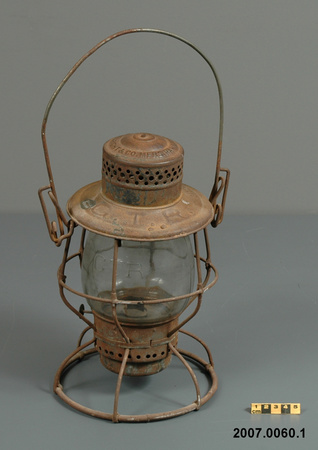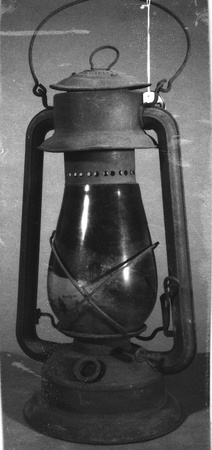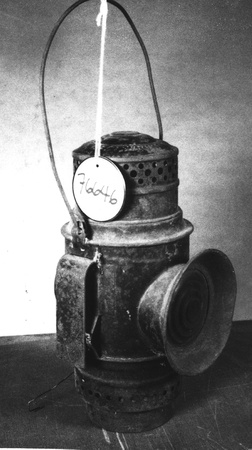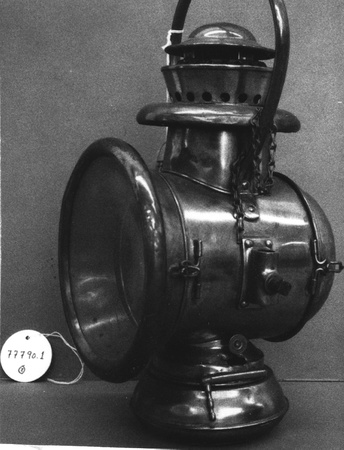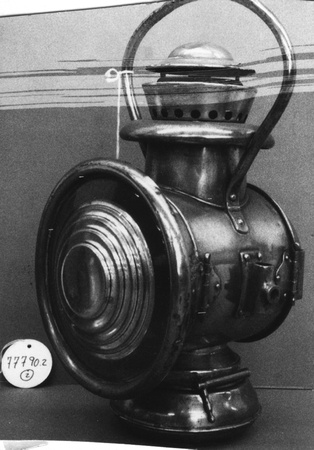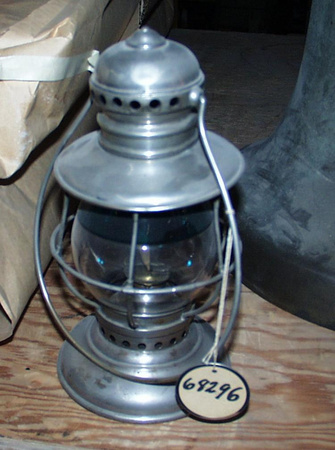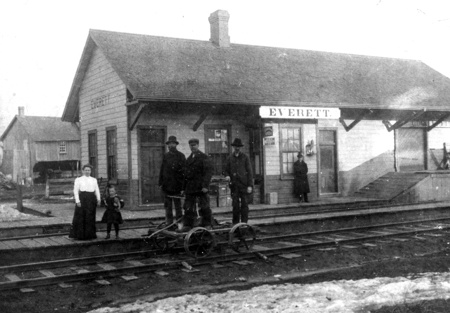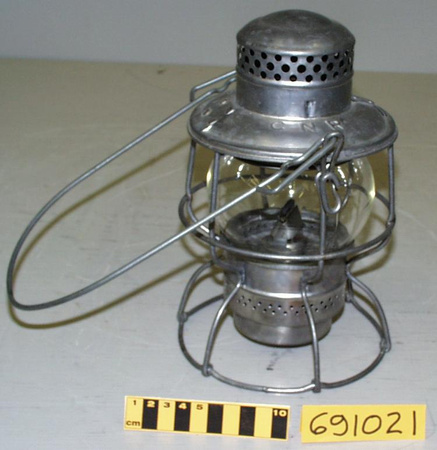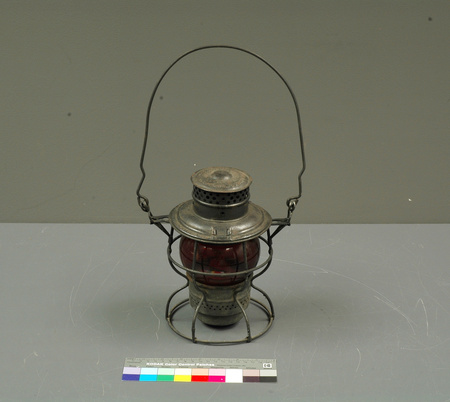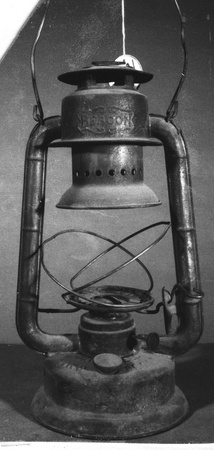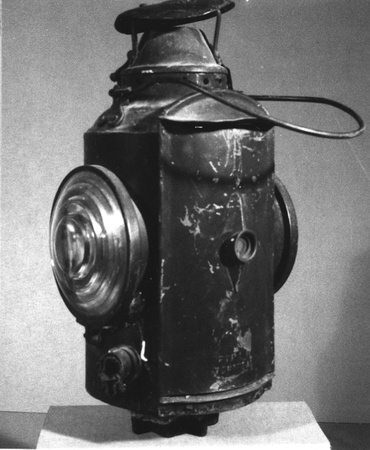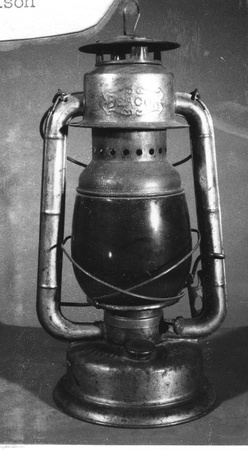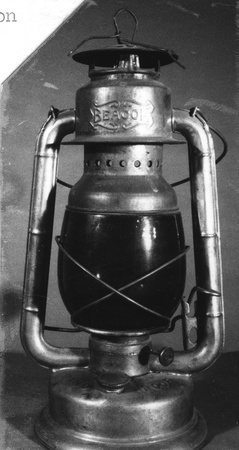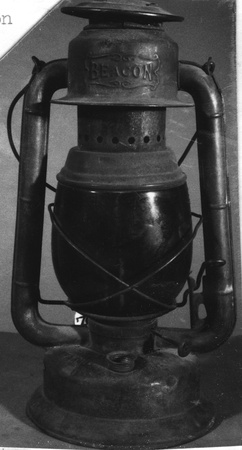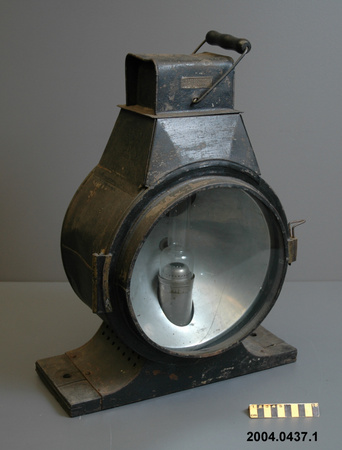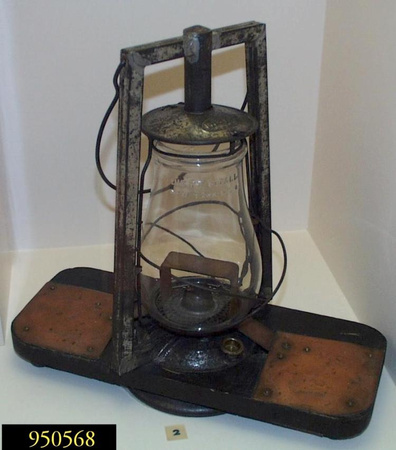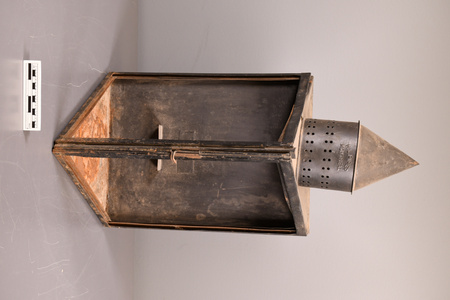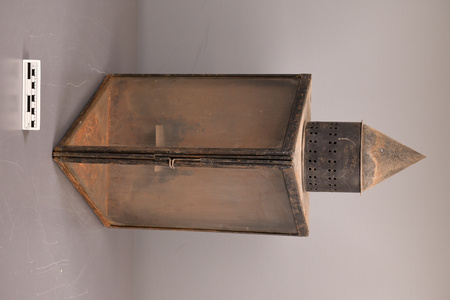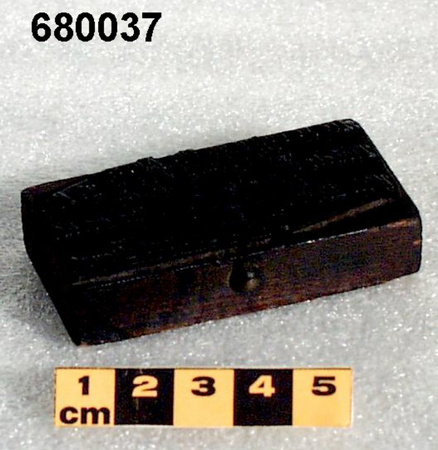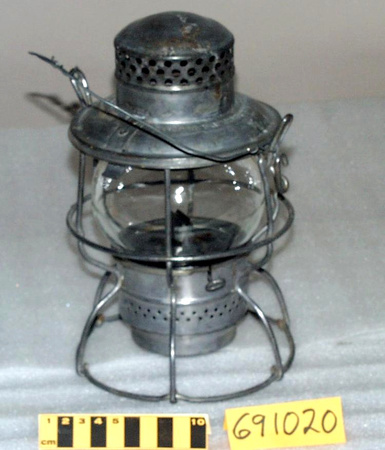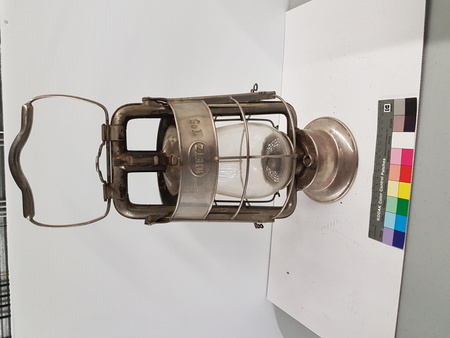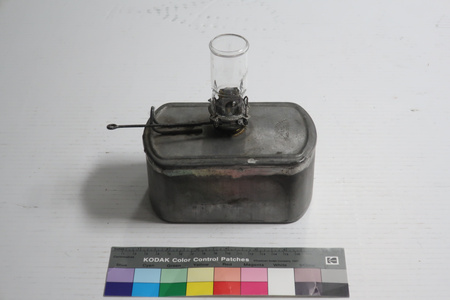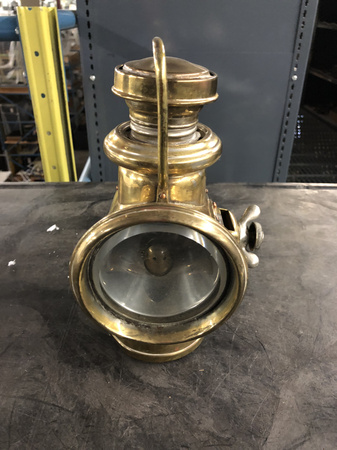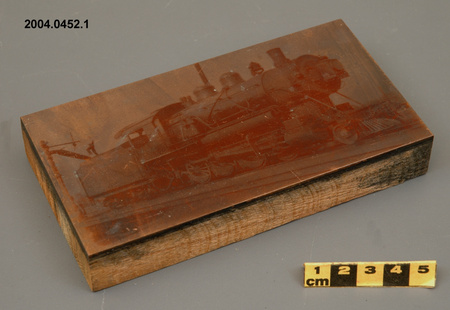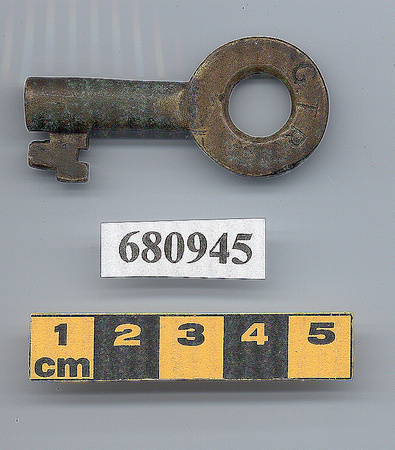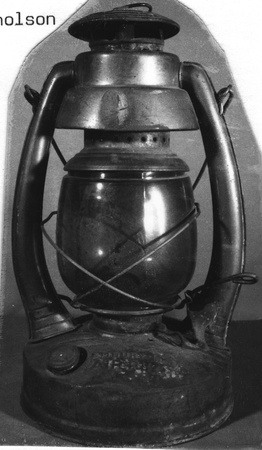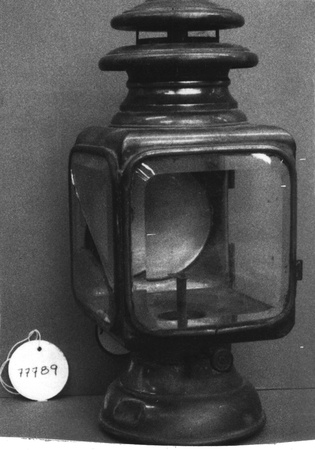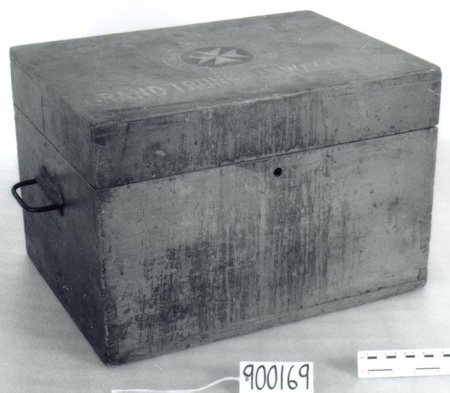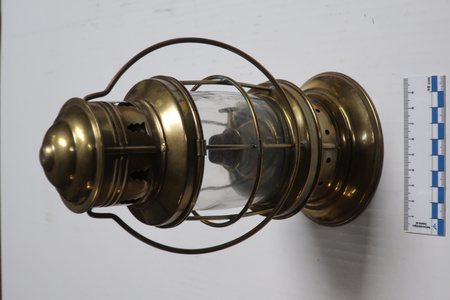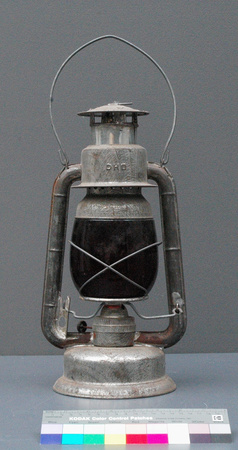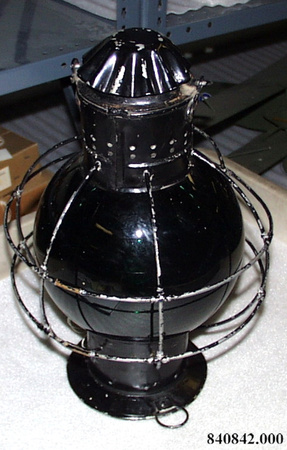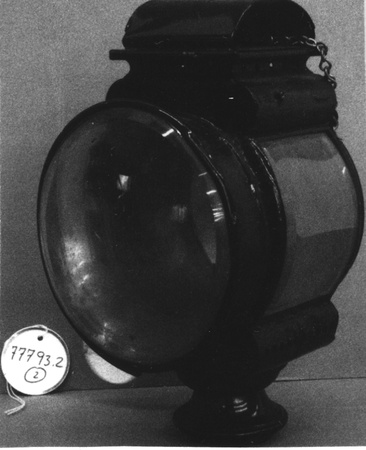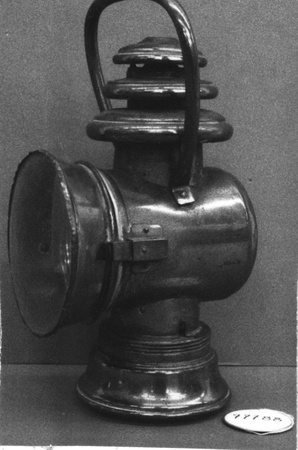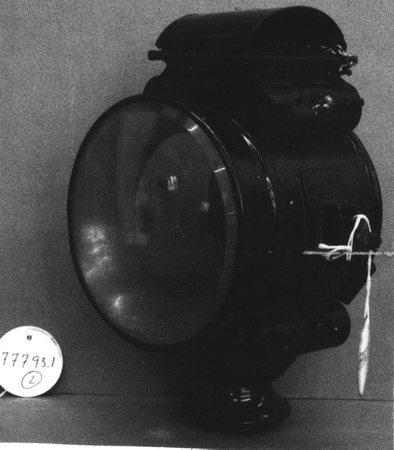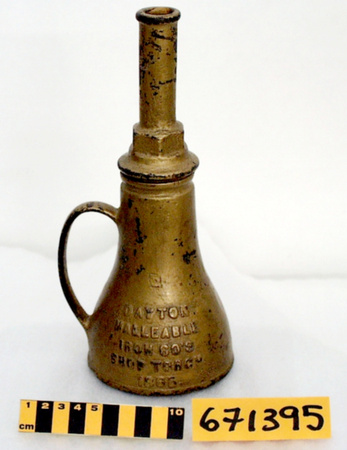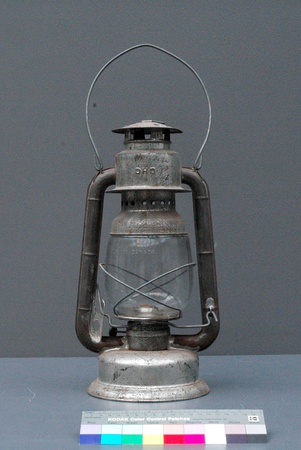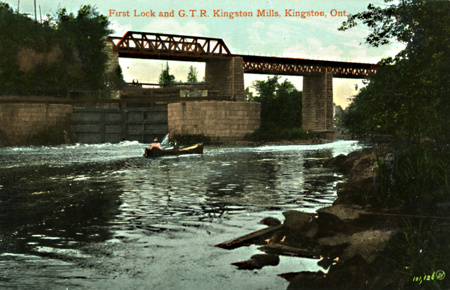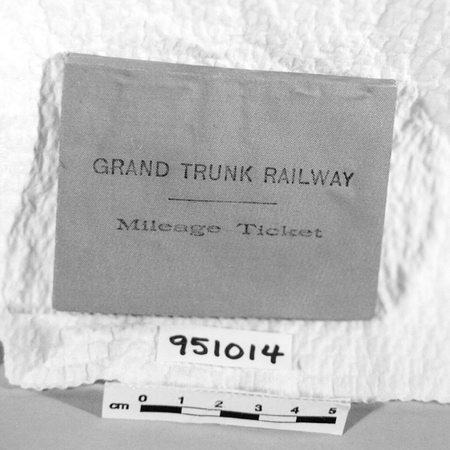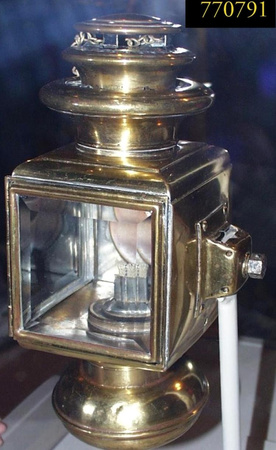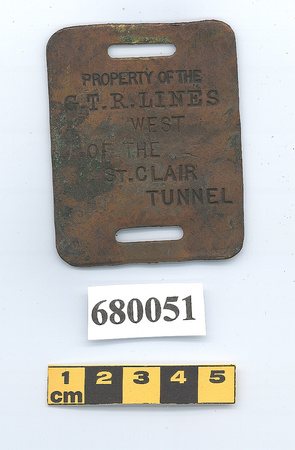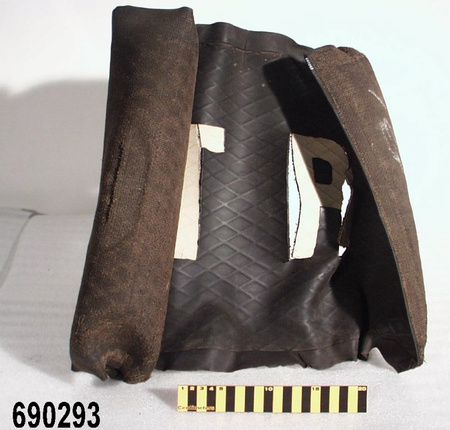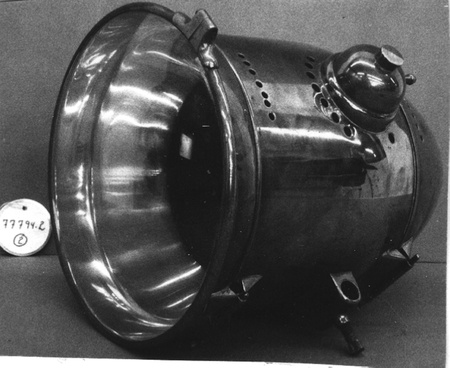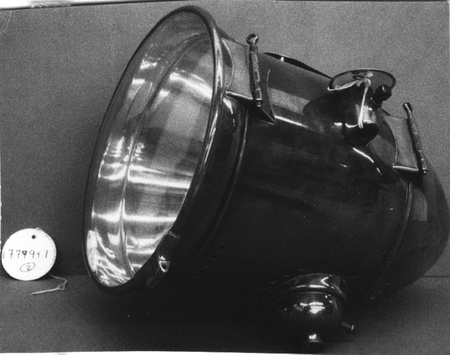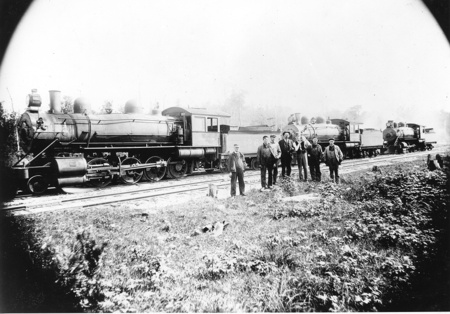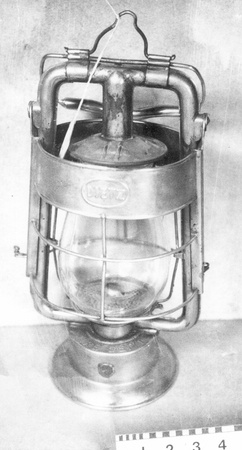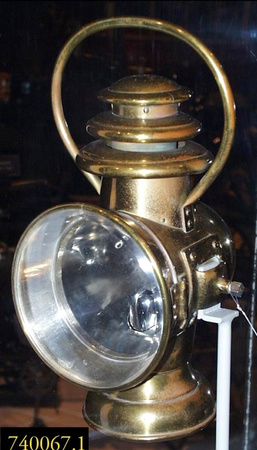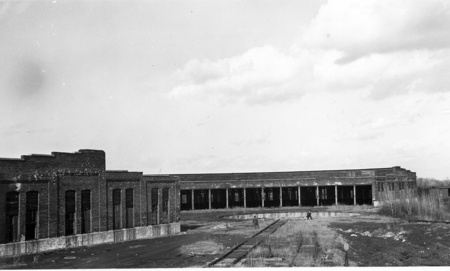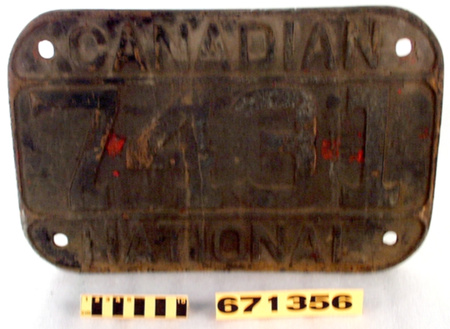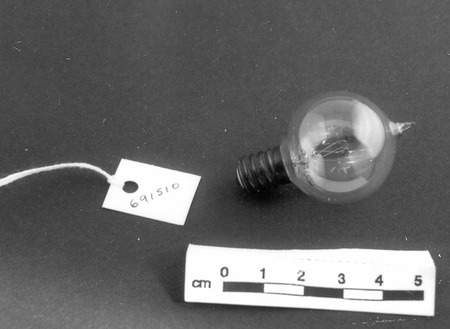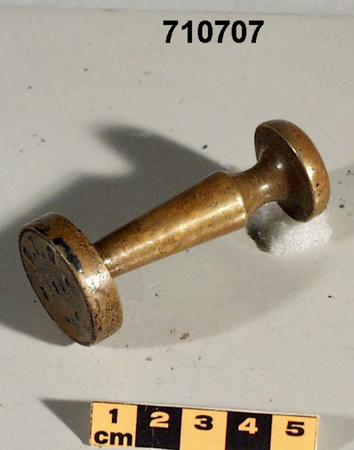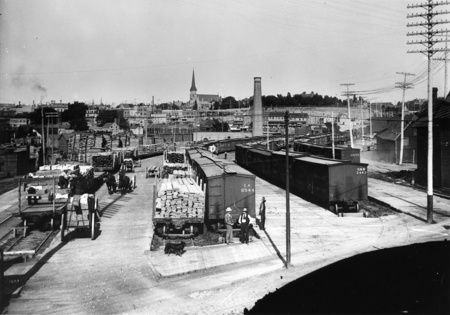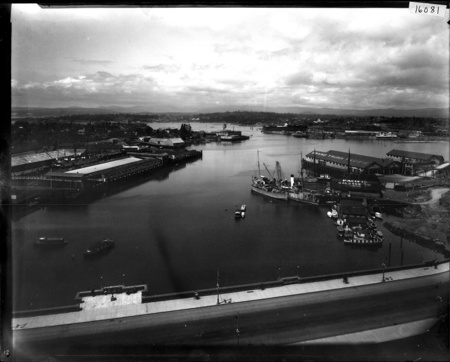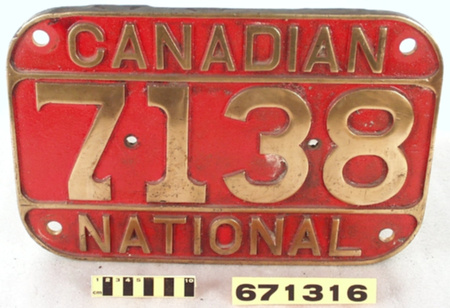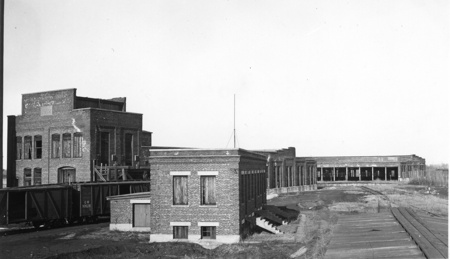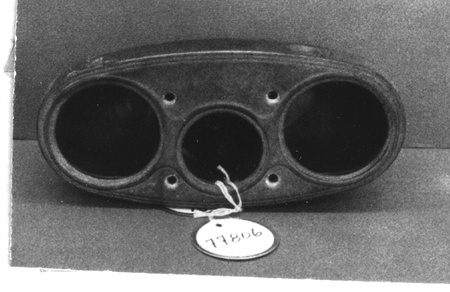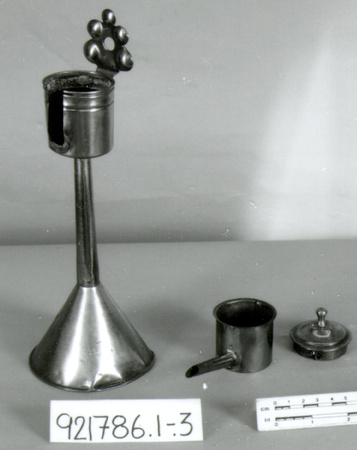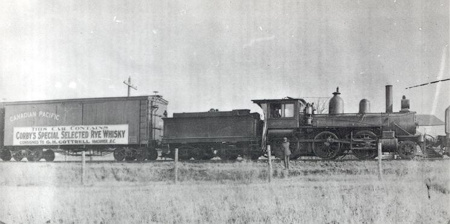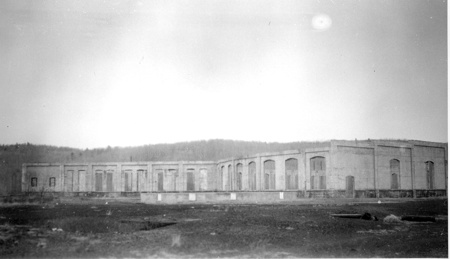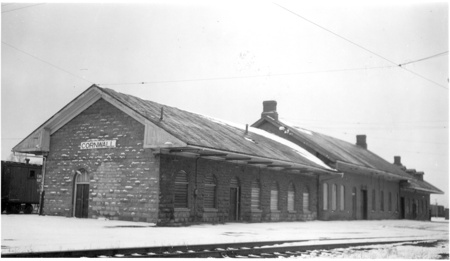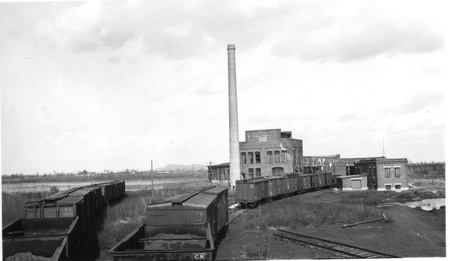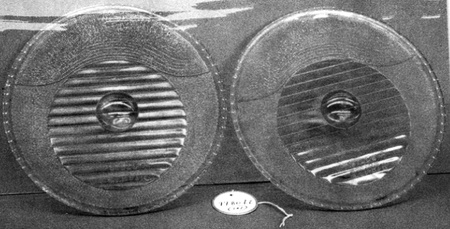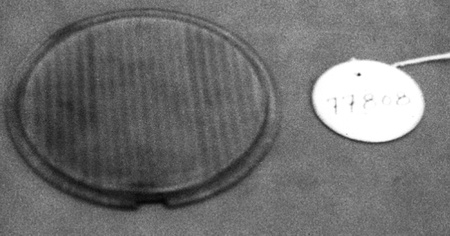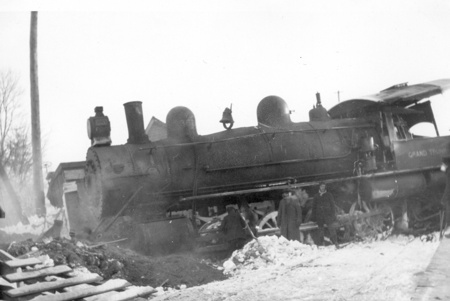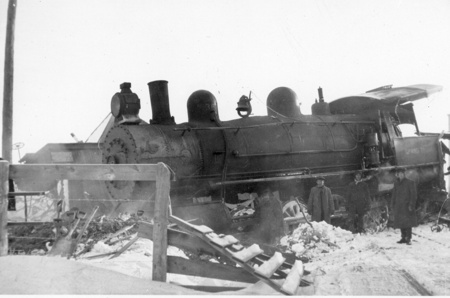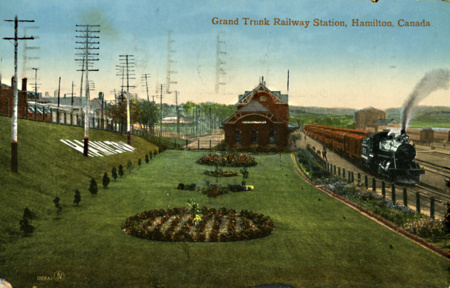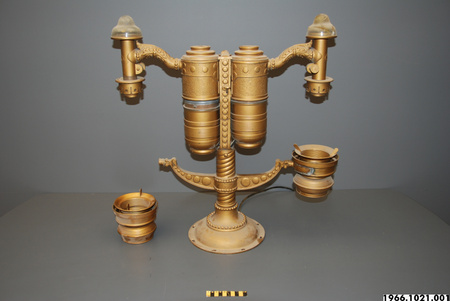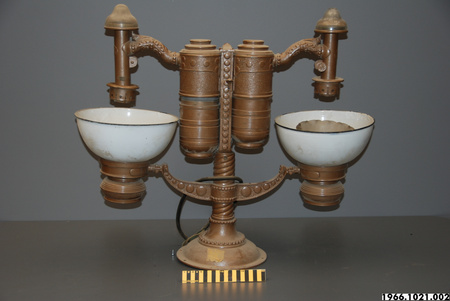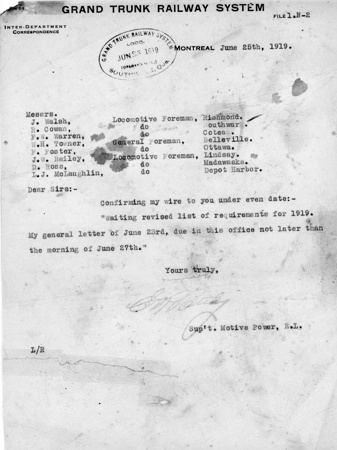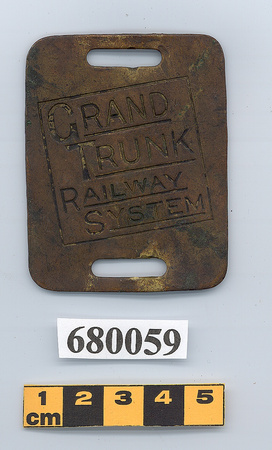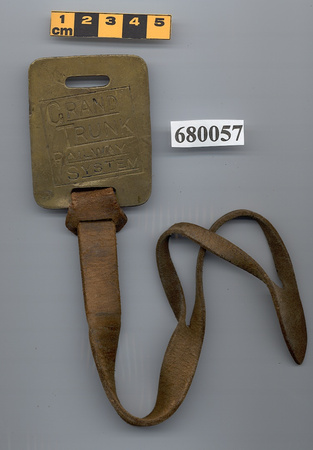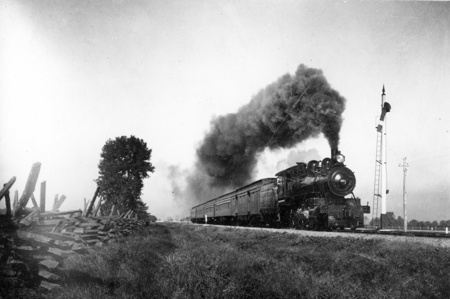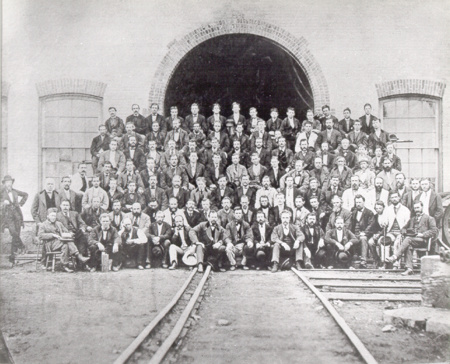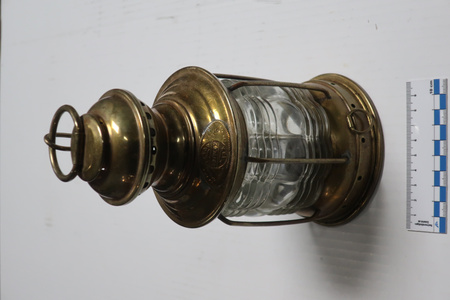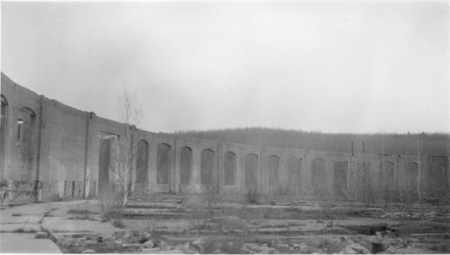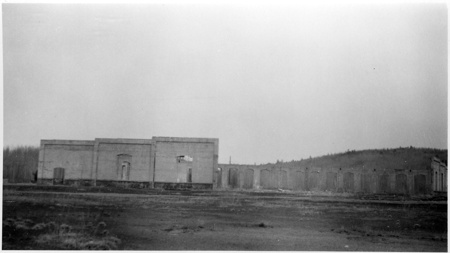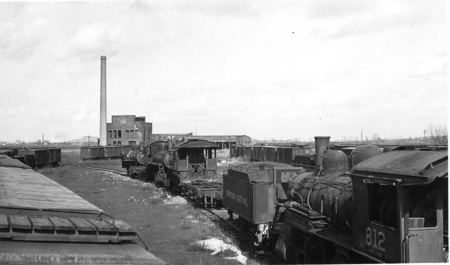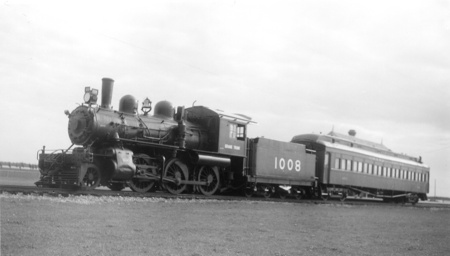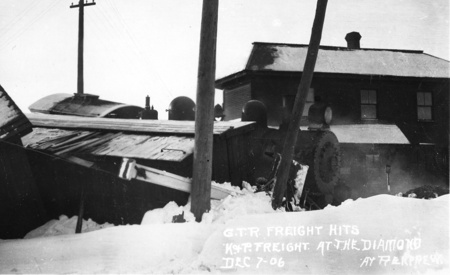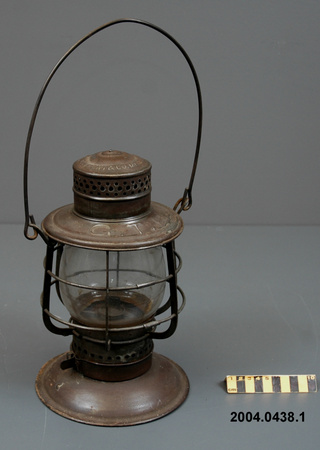Lanterne à huile
Utiliser cette image
Puis-je réutiliser cette image sans autorisation? Oui
Les images sur le portail de la collection d’Ingenium ont la licence Creative Commons suivante :
Copyright Ingenium / CC BY-NC-ND (Attribution-NonCommercial 4.0 International (CC BY-NC 4.0)
ATTRIBUER CETTE IMAGE
Ingenium,
2004.0438.001
Permalien:
Ingenium diffuse cette image sous le cadre de licence Creative Commons et encourage son téléchargement et sa réutilisation à des fins non commerciales. Veuillez mentionner Ingenium et citer le numéro de l’artefact.
TÉLÉCHARGER L’IMAGEACHETER CETTE IMAGE
Cette image peut être utilisée gratuitement pour des fins non commerciales.
Pour un usage commercial, veuillez consulter nos frais de reproduction et communiquer avec nous pour acheter l’image.
- TYPE D’OBJET
- signal oil or kerosene/bell bottom/double guard/5 3/8 inch globe
- DATE
- 1908–1919
- NUMÉRO DE L’ARTEFACT
- 2004.0438.001
- FABRICANT
- Wright, E.T. & Co.
- MODÈLE
- Grand Trunk Railway
- EMPLACEMENT
- Hamilton, Ontario, Canada
Plus d’information
Renseignements généraux
- Nº de série
- S/O
- Nº de partie
- 1
- Nombre total de parties
- 1
- Ou
- S/O
- Brevets
- S/O
- Description générale
- ferrous metal casing, handle, parts/ glass globe
Dimensions
Remarque : Cette information reflète la taille générale pour l’entreposage et ne représente pas nécessairement les véritables dimensions de l’objet.
- Longueur
- 19,4 cm
- Largeur
- 17,2 cm
- Hauteur
- 40,0 cm
- Épaisseur
- S/O
- Poids
- S/O
- Diamètre
- S/O
- Volume
- S/O
Lexique
- Groupe
- Technologie d'éclairage
- Catégorie
- Appareils d'éclairage
- Sous-catégorie
- S/O
Fabricant
- Ou
- Wright
- Pays
- Canada
- État/province
- Ontario
- Ville
- Hamilton
Contexte
- Pays
- Canada
- État/province
- Inconnu
- Période
- this example: between 1908 and 1919 +
- Canada
-
A Canadian made railway lantern made for and presumably used by the Grand Trunk Railway. E.T. and Harry Wright were born in Pennsylvania and moved with their parents to Hamilton, ON at the start of the American Civil War. In 1882 they started the E.T. Wright Co. which operated until it was sold to General Steel Wares Ltd. in 1933. E.T Wright is known to have purchased some of its lanterns from C.T. Ham Mfg. Co. of Rochester, NY and this lantern resembles some of Ham's (Ref. 1) Incorporated in 1852, the Grand Truck Railway became the major railway in eastern Canada though a combination of rail line construction and takeover of other railways. By the 1880's it stretched from Sarnia through Toronto and Montreal to the New Brunswick border, where it met the Intercolonial which serviced the Maritime provinces. The GTR's connection to Portland, Maine via the St. Lawrence and Atlantic Railroad gave it year round access to an ice-free port. The building of the Grand Trunk Pacific line to British Columbia led to GTR's bankruptcy in 1919. The federal government took it over and in 1923 GTR was amalgamated with Canadian National Railways, which became Canadian National (Refs. 2 & 3). An item from the collection of Mr Andrew Merrilees acquired between the 1950’s and his death in 1979. Mr. Merrilees was a noted collector of early railway and transportation material and was particularly interested in pre-1920 photography. The majority of Mr.Merrilees’ collection was sent to the National Archives circa 1980, his printed material to the National Library and the Ontario Archives. The material in this donation was retained by Andrew Merrilees Ltd., currently owned by Dr. Robert Stewart (Acquisition proposal for AK0114 archival material by D.Monaghan, in Supp. Info.). - Fonction
-
Used by railway workers as a portable light source for communicating visual signals for rail operations etc. The white (uncoloured) light was used to indicate safety and was a signal to go on. - Technique
-
A railrway oil lantern with a bell bottom, double guard and a removable 5 3/8 inch globe. Removable globe lanterns were first patented in the 1860's. 5 3/8 inch globes began appearing in that decade as well and were developed to utilize the No. 39 globe which was developed for the use of signal oil. This type of globe was in common use until World War I when the U.S. government asked railroads to reduce their use of edible oil, spurring the changeover to kerosene lanterns but bell bottom lanterns like this one continued to be used (Ref. 1). - Notes sur la région
-
Inconnu
Détails
- Marques
- top stamped 'E.T. WRIGHT & CO. MFRS. HAMILTON,-ONT./ shade stamped 'G.T.R. PAT'D 1908'/ raised lettering on globe reads 'E.T.W./ H.'
- Manque
- appears complete
- Fini
- metal painted black/ colourless transparent glass
- Décoration
- S/O
FAIRE RÉFÉRENCE À CET OBJET
Si vous souhaitez publier de l’information sur cet objet de collection, veuillez indiquer ce qui suit :
Wright, E.T. & Co., Lanterne à huile, entre 1908–1919, Numéro de l'artefact 2004.0438, Ingenium - Musées des sciences et de l'innovation du Canada, http://collection.ingenium.ca/fr/id/2004.0438.001/
RÉTROACTION
Envoyer une question ou un commentaire sur cet artefact.
Plus comme ceci
